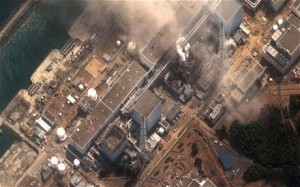What Should We Curse?
Posted on March 14, 2011
Filed Under Technology | Leave a Comment
The details of the nuclear accidents underway in Japan as we write will take months, if not years, to analyze. But as someone with decades of nuclear industry experience (including working on the recovery of Three Mile Island Unit 2), when the results are in I expect to be angry not at the technology, but rather about how we implemented it.
 I don’t know what the design basis seismic event was for the Fukushima Daiichi Nuclear Power Station, but it was certainly less than the unprecedented 9.0 earthquake that struck on Friday. Nonetheless, when the accident is investigated I suspect we may well find the reactor would have shut down normally, even during this beyond-design-basis event, had we done but a few things differently.
I don’t know what the design basis seismic event was for the Fukushima Daiichi Nuclear Power Station, but it was certainly less than the unprecedented 9.0 earthquake that struck on Friday. Nonetheless, when the accident is investigated I suspect we may well find the reactor would have shut down normally, even during this beyond-design-basis event, had we done but a few things differently.
As best I can tell from news reports, it was the shot from the tsunami, not the earthquake, that hit Fukushima’s vulnerable Achille’s heel. We know the seismic sensors caused the reactor to “scram,” that is shut down automatically thereby stopping the nuclear chain reaction. (These sensors work amazingly well. I’ve seen a small test reactor in the U.S. scram when a crane operator set a large, heavy piece of equipment down a little too hard adjacent to the reactor.)
I believe we also know that Fukushima did not suffer the classic accident that has been the reactor design bugaboo since nuclear reactors were invented: an earthquake that causes the total fracture of one of the reactors main coolant pipes, dumping massive amounts of cooling water out of the reactor.
Preliminary reports suggest that whatever the structural damage was to the reactor and its cooling systems, it was not enough to cause what we are seeing develop in Japan. Instead what we are seeing apparently stems from the loss of the plant’s emergency diesel generators. Once the reactor (which of course produces steam to generate electricity) shuts down, the diesel generators automatically start to provide the juice needed to operate the pumps, valves, blowers, and other equipment necessary to keep the reactor cool. All reactors give these essential generators seismic protection, and at Fukushima they are also protected by a concrete wall to stop a tsunami.
Alas, it appears the walls were too low to deal with wave from the unexpected 9.0 earthquake. The resultant tsunami cleared the wall and somehow damaged the generators, knocking out the power needed to keep the safety systems functioning. It seems that if the engineers had made a small design change, such as a higher wall or placing the generator building on higher ground, we might well be marveling at how these amazing reactors survived the earthquake of the millenium.
All of this is so much speculation at this point. Months from now when the analysis is in we may be cursing the technology. But I suspect we will be marveling at the technology and cursing our shortsighted placement of a few key components. – Dennis Owen
Comments
Leave a Comment
If you would like to make a comment, please fill out the form below.
Recently
- Presentations With Forethought
- Technical Writing’s Lineage – Surely It’s Deeper than Digital
- At the Holidays, Twitting Amazon
- Successful Cookie Baking – From Mom, an Acknowledged Expert
- Slides for a Tech Writer’s Craft
- Digital or Not, Be Clear
- Being Watchful About Digital Designs…
- When Proposals Don’t Click, Keep Making Them Anyway
- Like a Good Gardener, Help an Enterprise Keep Itself Current
- We’re Leaders All, And Need to Think That Way
Categories
Archives
- January 2017
- December 2016
- November 2016
- October 2016
- September 2016
- August 2016
- July 2016
- June 2016
- May 2016
- April 2016
- March 2016
- February 2016
- January 2016
- December 2015
- November 2015
- October 2015
- September 2015
- August 2015
- July 2015
- June 2015
- May 2015
- April 2015
- March 2015
- February 2015
- January 2015
- December 2014
- November 2014
- October 2014
- March 2014
- February 2014
- January 2014
- December 2013
- November 2013
- October 2013
- September 2013
- August 2013
- July 2013
- June 2013
- May 2013
- April 2013
- March 2013
- February 2013
- January 2013
- December 2012
- November 2012
- October 2012
- September 2012
- August 2012
- July 2012
- June 2012
- May 2012
- April 2012
- March 2012
- February 2012
- January 2012
- December 2011
- November 2011
- October 2011
- September 2011
- August 2011
- July 2011
- June 2011
- May 2011
- April 2011
- March 2011
- February 2011
- January 2011
- December 2010
- November 2010
- October 2010
- September 2010
- August 2010
- July 2010
- June 2010
- May 2010
- April 2010
- March 2010
- February 2010
- January 2010
Blogroll